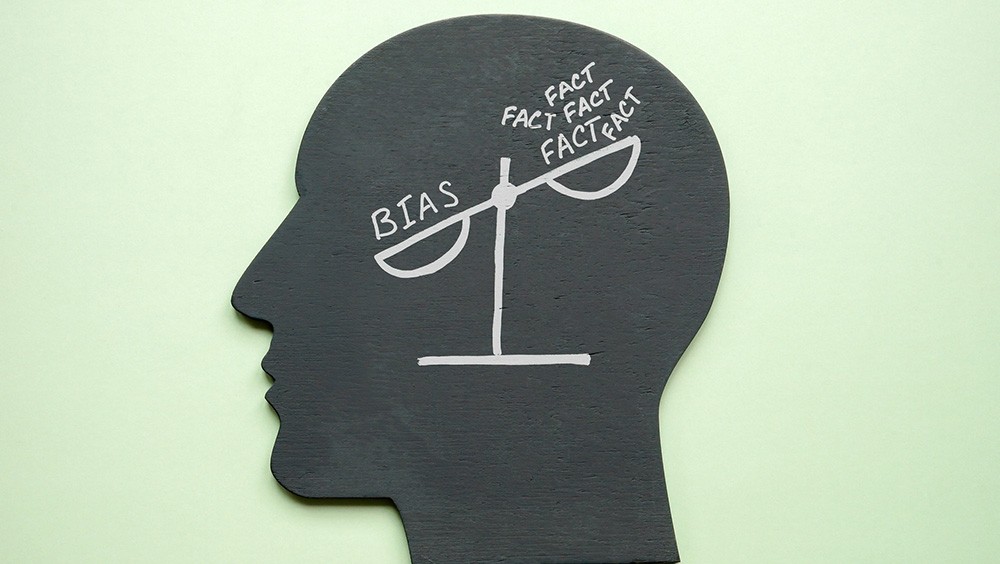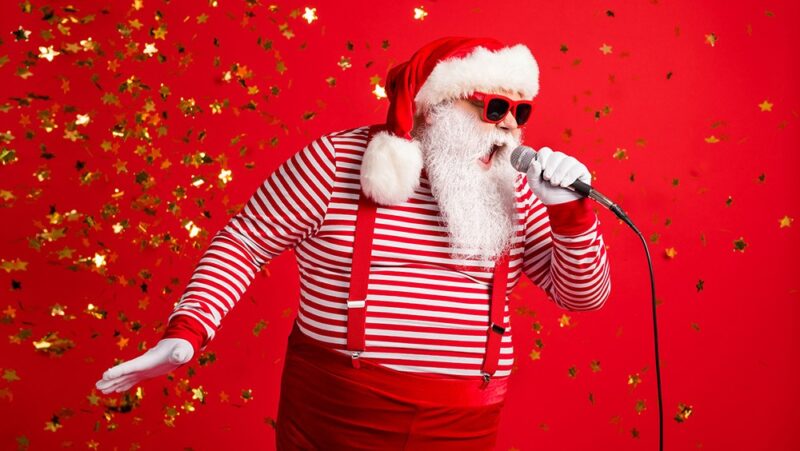Objectivity in Journalism: A Fair but Flawed Idea?

A common critique of news today is that journalists have an “agenda.” People want journalism to present facts, not opinions or biases. It’s a noble wish.
The First Amendment protects freedom of the press, but it does not require news outlets to be “objective.”
You’re not alone if you have ever read, watched or listened to a news story and thought, “That’s not objective journalism.” Everyone has encountered journalism that isn’t truly objective. That’s because humans who report, edit and produce news can’t truly be objective, no matter how hard they try.
The way journalists achieve “objective” work is a bit different than how the word is commonly used.
What is objectivity in journalism, and why is it so hard to achieve?
Comedian Jerry Seinfeld hinted that objectivity in journalism is a nice but ultimately imprecise measure when he said, “It’s amazing that the amount of news that happens in the world every day always just exactly fits the newspaper.”
That’s a joke, of course, but one that highlights a truth: The press does not cover everything that happens. Exactly what is considered newsworthy is the sum of many factors, including what kind of outlet is covering it (for example, a community newspaper versus a political news site), the audience, and the pure gut instinct of editors and newsroom leadership.
Every news outlet across print, broadcast and digital media decides what to cover and what not to cover, whose voices to include and whose to leave out. Even choices like how much of a source’s quote to include are part of a journalist’s job.
Decisions like these are called news judgment.
Exercising news judgment means journalists must consider multiple sides and give people who don’t have access to all that information a useful way to understand and interpret it.
A common saying in journalism education is, “If one person says it’s raining and another person says it’s dry, it’s not your job to simply report what both say. It’s your job to stick your head out the window and find out what’s true.”
It’s also a journalist’s job to find out more:
- Double check the historical weather data.
- Help people understand why one person says it’s raining and another says it isn’t.
- Make sure each person is talking about the same thing. Is the person who thinks it’s raining standing under a broken pipe? Does the person who thinks it’s dry have an umbrella?
- Uncover the reasons and motivations driving each person’s statements and beliefs.
A journalist’s job is to add context and analysis to information while striving for fairness and accuracy.
How do journalists ensure their work is fair and accurate?
Newsroom leader and entrepreneur David Cohn argues that journalism is a process, not a product. Many journalists agree.
Thinking of journalism like a product – something that has measured ingredients, goes in an oven, and comes out the same every time – is like thinking it’s always purely objective. In cooking, variations in ingredients, oven temperatures, the chef’s background, even elevation can affect the final product. Apply the same thinking to news reporting.
Instead, consider the process a chef takes to collect the ingredients, carefully prepare them, measure some things, eyeball others, and incorporate their own family methods and cultural background to make it unique.
That’s a useful way of understanding the process of standards-based journalism.
Standards-based journalism is essentially following a set of stated values and principles – not necessarily black and white rules, and not legal mandates – in the process of doing journalism.
Remember, under the First Amendment, the government cannot mandate who is a journalist, dictate how they do their work, or punish them because that work isn’t “objective.”
That’s where professional organizations and ethics codes come in.
Those who distrust the news media – a significant number of people in the U.S. – might think journalism ethics is an oxymoron, like jumbo shrimp.
Journalists are not required to hold a license to practice like a doctor or lawyer. Their ethics codes, often created by journalism associations, are voluntarily embraced and not legally enforceable under the First Amendment. Journalism associations and their ethics codes exist to help newsrooms and individual journalists think through the complexity involved in the process of journalism.
Notably, ethics codes from major groups don’t use the term “objectivity,” a nod to how difficult it is to measure and achieve. Rather, these ethics codes point to guiding principles for ethical decision making.
Three major codes embraced by many journalists and news outlets come from the Society of Professional Journalists, the Radio Television Digital News Association, and the National Press Photographers Association, organized under similar core values.
By using these and similar standards of ethical journalism, journalists and news outlets can strive to do their jobs of informing the public in a fair, accurate, accountable and transparent way.
Tips for news consumers to check for standards-based journalism
Just like there are media literacy techniques to avoid falling for and spreading misinformation and disinformation, here are tips for identifying and interacting with standards-based journalists and news outlets.
1. About section: What does the outlet say about itself on its website? How is it funded? How does it guarantee a separation between funders and the newsroom?
Good examples: CalMatters and MinnPost
2. Contact: How easy or difficult does the news outlet make it to get in contact to submit feedback? Can you call, email or text a reporter directly? If you do submit feedback, how long does it take to get a response?
Good examples: Voice of San Diego and KNKX Public Radio
3. Ethics and standards: What kinds of standards and ethical principles does the outlet say it follows? When those standards are not met, what kind of process do they go through to change?
Good examples: Salem Reporter and Wisconsin Watch
4. Corrections and clarifications: How does the outlet handle corrections? Is it difficult to submit one? Where in the story is the correction placed?
Good examples: NPR and Texas Tribune
5. Show the process: For long or complex stories and investigations, how open is the outlet to showing the reporting process? What are some considerations that reporters and editors made in deciding what to include or exclude?
Good examples: ProPublica and Chicago Tribune
For more on how newsrooms build trust and credibility with the public by showing their processes, see these examples and explainers from Trusting News.
Why the ‘golden era’ of objectivity in journalism is inaccurate
Calls for objectivity in journalism might refer to a time when everything was done right, before it became partisan and biased. But there was no such time.
In the 1800s and early 1900s, it was common for cities to have many newspapers. While that was good for a diversity of sources, these papers were largely controlled by competing interests, including political parties and labor unions, all trying to advance their perspective and agenda. Objectivity was rarely, if ever, a goal.
Whatever time someone may think of as a “golden era” for objectivity in journalism, the idea that famous journalists were all purely “objective” is inaccurate. Walter Cronkite during Vietnam, Edward R. Murrow during the Red Scare, Joseph Pulitzer in the early 1900s: They, like all journalists before and after them, were subject to their own ways of looking at the world and having those ways influence their work.
Cronkite is known for his signature line at the end of TV broadcasts: “And that’s the way it is.” But that’s still his opinion of everything worthy of being included and presented in a certain way. He was famously called “Uncle Walter,” a straight shooter thought of as a purist for objectivity in journalism. But in 1968, he switched to openly advocating for the U.S. to leave Vietnam, saying on air it was his subjective opinion.
Murrow editorialized on air against Sen. Joseph McCarthy’s tactics investigating Americans and accusing them of being Communists. Murrow’s series of broadcasts on his CBS program “See It Now” are credited with bringing down McCarthy.
Pulitzer, for whom one of the most prestigious awards in journalism is named, engaged in a newspaper war with William Randolph Hearst. The two competing newspaper owners used “yellow journalism” – outright sensationalism and made-up stories – in the late 19th century to push a war agenda in the service of selling newspapers.
All these examples are of white men. In their eras, journalism at major outlets – like many industries – largely excluded women, people of color and those in other marginalized groups, shaping the way media narratives played out.
What eventually became the Society of Professional Journalists started in 1909 as a college fraternity of “newspapermen” aiming to professionalize journalism and provide standards. Women weren’t allowed to join until 1969.
More than 50 years later, journalists, news outlets and journalism associations are still working to make up for historical inequities in the profession – and on their own processes for ensuring fairness, accuracy, accountability and transparency for themselves.
Scott A. Leadingham is a Freedom Forum staff writer. He previously worked as a public media news director and education director for the Society of Professional Journalists. On X/Twitter: @scottleadingham
Jingle Bell Blocked: 10 Holiday Songs That Have Been ‘Banned’
U.S. Journalist Evan Gershkovich Marks One Year of Imprisonment in Russia
Related Content
2025 Al Neuharth Free Spirit and Journalism Conference
All-Expenses-Paid Trip To Washington, D.C.
June 22-27, 2025
Skill-Building
Network Growing
Head Start On Your Future

